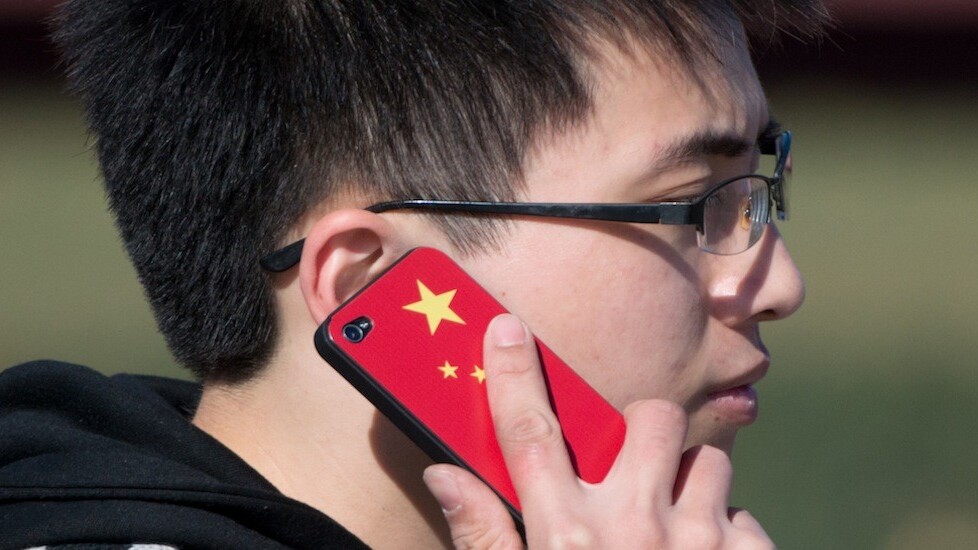
It’s already a well-established fact that China is the world’s largest smartphone market — but what exactly do Chinese consumers use their mobile devices for?
A recent report from the China Internet Network Information Center (CNNIC) obtained by TNW sheds some light on how the Chinese spend a majority of the time on their mobile devices for entertainment purposes — playing games, reading, watching videos and listening to music.
However, Chinese smartphone users are a difficult audience to cater to — with challenges such as monetization troubles and a short attention span. In the past half a year, only 26.9 percent of Chinese smartphone owners who access entertainment services on their devices have forked out money for what they use. About 39.3 percent of the respondents surveyed play a game for only two weeks, and then move on to something else.
Chinese smartphone users and their entertainment outlets
On average, as of August 25 this year, Chinese smartphone users spend 109 minutes daily on their mobile devices for entertainment — or 60.6 percent of the time spent on their mobiles other than for phone calls and text messages. The report found that in total, the Chinese are on their mobile phones for 179 minutes daily on average, excluding time for calls and messages.
A staggering 97.6 percent of smartphone users say they have used their handsets for entertainment purposes in the past half a year.
A breakdown of what entertainment outlets occupy Chinese consumers: there are 208 million Chinese smartphone users who use their devices for mobile gaming, making up 44.9 percent of all users, while there are 174 million users who use their mobile devices to watch videos, or 37.6 percent.
Those who read on their mobile phones make up 56.5 percent of all smartphone users, or 262 million people, while there are 285 million people who listen to music while on the move, or 61.4 percent.
Reading and listening to music doesn’t require as much Internet bandwidth as playing games and watching videos, so it’s not surprising that according to CNIC, smartphone users number more in the two former entertainment categories
It notes that with the improvement of connectivity, presumably more Wi-Fi availability or faster 3G and 4G networks, mobile gaming and video-watching will be on the rise.
(Not) paying for smartphone entertainment
However, monetizing smartphone entertainment usage is a tough nut to crack.
The CNNIC report found that only 26.9 percent of Chinese smartphone owners who use their devices for entertainment have paid for the services they have accessed in the past half a year. About 27.4 percent and 20 percent of smartphone users pay for mobile games and reading material respectively, but those who pay for music make up a mere 5.6 percent.
Even among those who pay, they mainly fork out below CNY50 ($8) per month on average.
The reluctance of Chinese consumers to pay has likely posed a lot of challenges for app developers in mainland China who need funds to expand further, and will continue being a difficulty that they have to overcome. This is probably why Tencent took so long to roll out games via its messaging service WeChat, even as its competitors — Kakao Talk from Korea and Line from Japan — already added on monetization services, including games, for quite some time before it did.
The potential of games
Some good news for social services though: the CNNIC report found that 32.3 percent of smartphone users who play games on their mobile devices added new games via WeChat or social networking site QQ. The agency says: “The power of chat apps is huge due to their wide reach and it is an important method through which games can gain market share.”
CNNIC notes that so far this year, mobile games have gone through explosive growth in China.
Rolling out plenty of different games is also crucial to keep the attention span of Chinese mobile users, as the CNNIC report says that consumers tend to play a game continuously for less then two months. Out of those who play games on their mobile devices, 25.8 percent play a game for one to two months, while 39.3 percent only play a game for two weeks.
In the meantime, standalone games (that don’t require Internet connection once downloaded and are in single-player format) are leading in the Chinese smartphone game sector at 92.4 percent. Mobile Internet games make up 56 percent of all the games that Chinese smartphone users are playing.
This comes as a natural development considering that with China’s Internet landscape, needing a connection to play a game turns people off. Games that come pre-installed on mobile phones tend to be more popular as they are convenient and perform better on the platform they have been optimized for — with 62.7 percent of those surveyed playing these games.
CNNIC notes that mobile gaming is gradually becoming a habit for smartphone users, with more and more consumers carving out a certain timeslot for playing games — with 68.5 percent of respondents doing so at bed-time and 69.2 percent during their free time at home.
The PC is still relevant, but has been affected by mobile
The report also found that PCs have been affected by the rapid adoption of mobile, with 40.8 percent of the respondents saying they use their PCs less for entertainment as they use more of their smartphones for the same purpose.
However, the PC is still relevant as an entertainment tool. The report found that the percentage of smartphone users who play games and watch videos on their mobile devices — 46.7 percent and 38.9 percent respectively — is much lower than PC users who do the same on their computers, which stands at 72.7 percent and 85.9 percent respectively.
CNNIC says: “This proves that there is a lot more space for growth for mobile gaming and video-watching. How to draw more users from the PC to mobile is going to be an important focus to expand the mobile gaming and video user-base.”
The battering of the PC comes also as CNNIC found that using the smartphone as an entertainment tool is evolving from situational to habitual, with 77.8 percent of those surveyed using their smartphones for entertainment at bed-time, and 73.2 percent of them using their mobiles for entertainment when they are free at home or in the dorm.
Headline image via Ed Jones/AFP/Getty Images, WeChat image via Bryanlt
Get the TNW newsletter
Get the most important tech news in your inbox each week.





